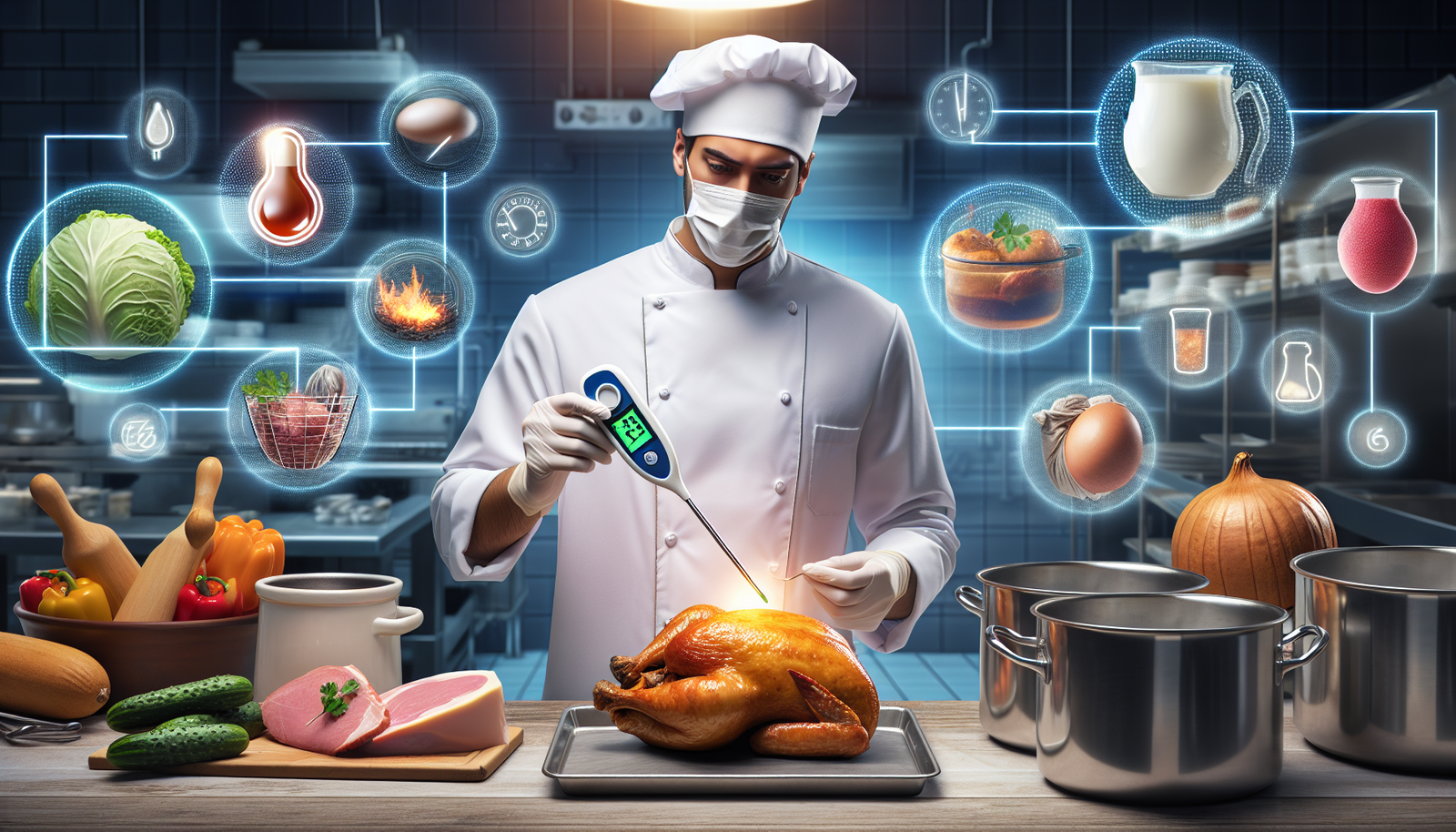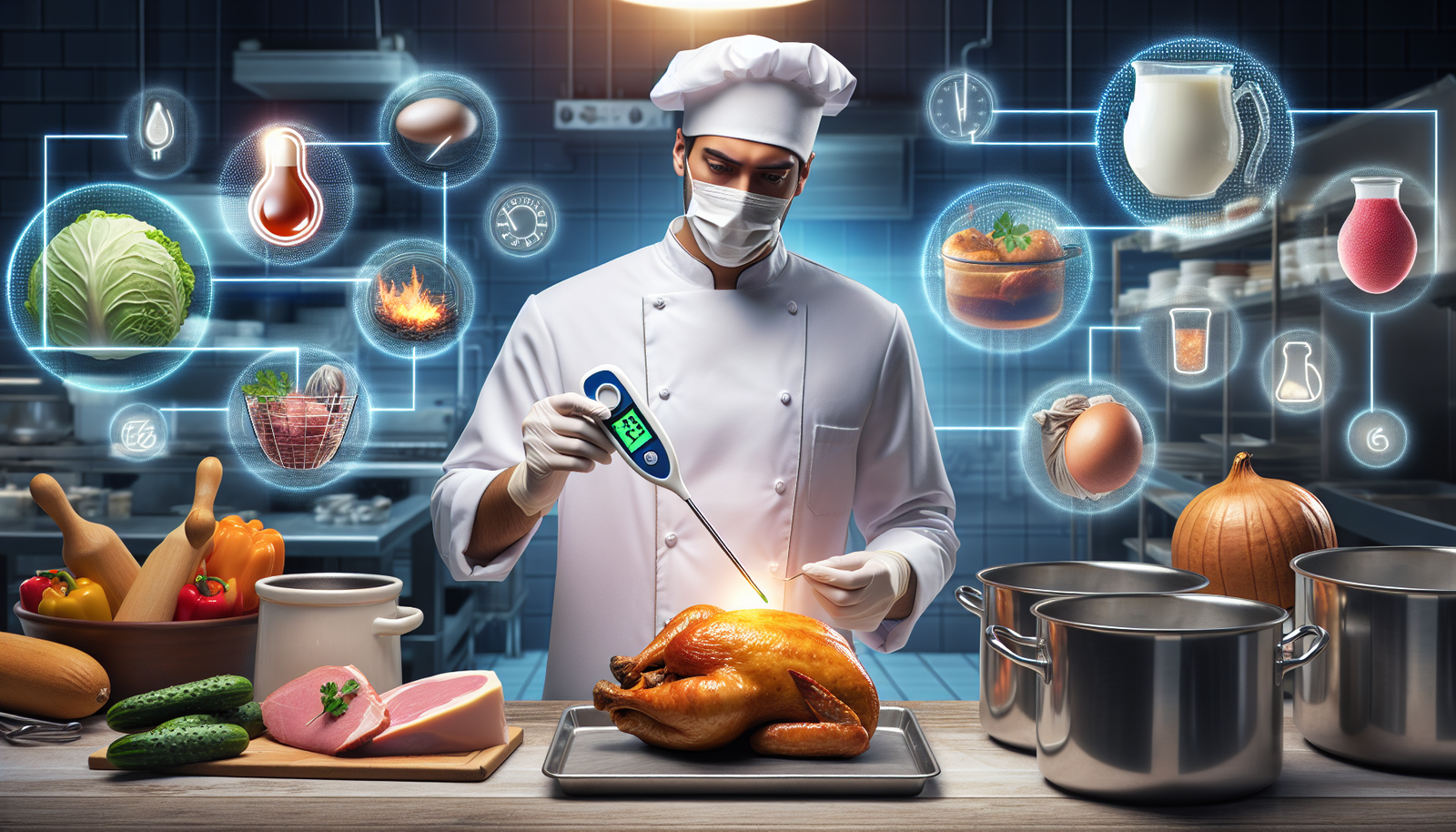In the world of culinary safety, one question remains paramount: what is the minimum temperature that food should be heated to? While we may pride ourselves on our culinary skills, it is essential to prioritize food safety and ensure that our meals are heated adequately. By understanding the minimum temperature requirements, we can safeguard against harmful bacteria and enjoy a tasty, worry-free dining experience. So, let’s dive into the world of temperatures and discover the benchmarks that will help us keep our food both delicious and safe.
The Importance of Proper Heating Temperatures
In order to ensure food safety and prevent foodborne illnesses, it is crucial to pay attention to the proper heating temperatures of the various food groups. Heating food to the recommended minimum temperatures not only kills harmful bacteria and pathogens but also ensures that the food is cooked evenly and thoroughly. Whether you are cooking poultry, pork, vegetables, or baked goods, understanding the appropriate temperatures is essential for maintaining the quality and safety of the food you prepare.
Food Safety Guidelines
Food safety guidelines are designed to protect consumers from the dangers of consuming undercooked or unsafe food. The recommended minimum cooking temperatures specified by these guidelines have been established based on scientific research and aim to eliminate any potential risks associated with foodborne illnesses. By following these guidelines, you can significantly reduce the risk of food poisoning and its associated health complications.
Preventing Foodborne Illnesses
Foodborne illnesses are caused by consuming food contaminated with harmful bacteria, viruses, parasites, or toxins. The consequences of such illnesses can range from mild discomfort to severe health complications, especially for those with weakened immune systems, pregnant women, young children, and the elderly. Proper heating temperatures help ensure that these microorganisms and pathogens are killed, preventing the occurrence of foodborne illnesses and safeguarding the health of you and your loved ones.
Recommended Minimum Temperatures for Different Food Groups
Poultry and Stuffed Meats
When it comes to poultry and stuffed meats, such as chicken, turkey, or dishes like stuffed peppers or cabbage rolls, it is crucial to reach and maintain an internal temperature of at least 165°F (74°C). This temperature is necessary to kill bacteria like Salmonella and ensure that the meat is cooked thoroughly. Using a food thermometer to check the internal temperature is highly recommended to ensure accuracy and safety.
Pork, Veal, and Lamb
Pork, veal, and lamb dishes must be cooked to a minimum internal temperature of 145°F (63°C). This temperature allows for a slight pinkness in the meat while still ensuring its safety. It is important to note that ground products, such as sausages or meatballs made from these meats, should be cooked to a higher temperature of 160°F (71°C) to ensure any potential bacteria are killed completely.
Ground Meats
Ground meats, including beef, pork, lamb, and poultry, should always be cooked to a minimum internal temperature of 160°F (71°C). This temperature is necessary to eliminate harmful bacteria like E. coli and Salmonella that can be present in raw or undercooked ground meat. Using a food thermometer is essential to accurately measure the internal temperature and ensure that it reaches the recommended level of safety.
Fish and Seafood
Fish and seafood, including fillets, steaks, shellfish, and shrimp, need to be cooked to an internal temperature of 145°F (63°C). Cooking seafood to this minimum temperature ensures that any potential pathogens, such as Vibrio or Listeria, are destroyed, making the food safe for consumption. Additionally, it is crucial to cook fish until it becomes opaque and flakes easily with a fork to ensure it is fully cooked.
Eggs
When preparing dishes that contain eggs, such as omelets, quiches, or casseroles, it is vital to cook them to an internal temperature of 160°F (71°C). This is especially important for dishes that are served to vulnerable populations, like the elderly or pregnant women, as undercooked eggs can harbor bacteria like Salmonella. By reaching the recommended temperature, you can minimize the risk of foodborne illnesses associated with eggs.
Leftovers
Reheating leftovers is a common practice, but it is crucial to ensure that they are reheated to a minimum internal temperature of 165°F (74°C). This temperature helps kill any bacteria that may have multiplied during storage and ensures that the leftovers are safe to consume. Utilizing a food thermometer to check the temperature is a simple yet effective way to guarantee the safety of reheated leftovers.
Casseroles and Reheated Foods
Casseroles and reheated foods, including lasagna, baked pasta dishes, or stews, should be reheated to an internal temperature of 165°F (74°C). This not only ensures that any harmful bacteria are eliminated but also helps maintain the quality and taste of the dish. It is important to stir the food occasionally while reheating to ensure even heating and prevent any cold spots where bacteria may survive.
Microwaved Foods
When using a microwave to heat or cook food, it is essential to follow proper temperature guidelines to ensure food safety. It is recommended to rotate and stir the food during the heating process to promote even cooking. Using a microwave-safe thermometer to check the internal temperature is highly recommended, as microwaves do not always heat food uniformly. Remember that microwaved foods should be heated to the same internal temperatures as other cooking methods to ensure the eradication of harmful bacteria.
Fruits and Vegetables
While fruits and vegetables are generally safe to consume raw, certain cooking methods can help enhance their flavor and reduce the risk of contamination. When blanching or cooking vegetables, it is important to bring them to a minimum internal temperature of 145°F (63°C) to ensure the destruction of any potential pathogens. For fruits, such as apples or pears used in baking or pies, reaching an internal temperature of 165°F (74°C) is recommended for optimal food safety.
Bread and Baked Goods
When baking bread and other baked goods, it is important to cook them to an internal temperature of at least 190°F (88°C). This ensures that the ingredients are fully cooked, any yeast present is deactivated, and harmful bacteria are eliminated. Baked goods that contain eggs or dairy products, such as cakes or custards, should be cooked to an internal temperature of 160°F (71°C) to ensure food safety.

Special Considerations for Cooking Temperatures
Sous Vide Cooking
Sous vide cooking is a method that involves vacuum-sealing food in a bag and cooking it in a water bath at a controlled temperature. While this technique allows for precise temperature control and can result in tender and flavorful dishes, it is important to follow specific guidelines to ensure food safety. For most foods cooked sous vide, including meats, poultry, and fish, it is recommended to cook them to the desired serving temperature specified in the cooking recipe. However, it is crucial to ensure that the minimum cooked temperature is reached and maintained for a sufficient amount of time to eliminate any potential pathogens.
Slow Cooking
Slow cooking, also known as crock-pot cooking, is a convenient and time-saving method for preparing meals. When using a slow cooker, it is essential to ensure that the food reaches a safe internal temperature before consuming. Most slow cookers operate at a low heat setting, so it is important to allow sufficient time for the food to reach the recommended temperatures. It is generally advised to cook meats to at least 145°F (63°C) and poultry to 165°F (74°C) when using a slow cooker.
Smoking and Curing
Smoking and curing are popular methods of food preservation and flavor enhancement. When smoking or curing meats, it is important to ensure that the food reaches the appropriate internal temperature to eliminate any potential safety risks. For most smoked or cured meats, such as bacon or ham, a minimum internal temperature of 145°F (63°C) is recommended. Additionally, it is important to follow proper smoking procedures and use appropriate curing agents to prevent bacterial growth and ensure food safety.
Commercial Food Preparation
In commercial food establishments, such as restaurants or catering services, it is crucial to adhere to strict food safety regulations. These regulations often include guidelines for proper cooking temperatures to ensure the safety of the food being served. Commercial kitchens typically implement more rigorous temperature monitoring systems, including the use of calibrated thermometers and regular employee training on food safety. By following these guidelines, commercial establishments can uphold high standards of food safety and protect their customers from foodborne illnesses.
In conclusion, understanding and following the recommended minimum temperatures for different food groups is vital for ensuring food safety and preventing foodborne illnesses. Proper heating temperatures not only kill harmful bacteria and pathogens but also ensure that the food is cooked evenly and thoroughly. Whether you are cooking poultry, pork, vegetables, or baked goods, it is important to pay attention to these temperature guidelines to protect your health and the health of those you serve. By following these recommendations, you can enjoy delicious and safe meals while minimizing the risk of foodborne illnesses.

